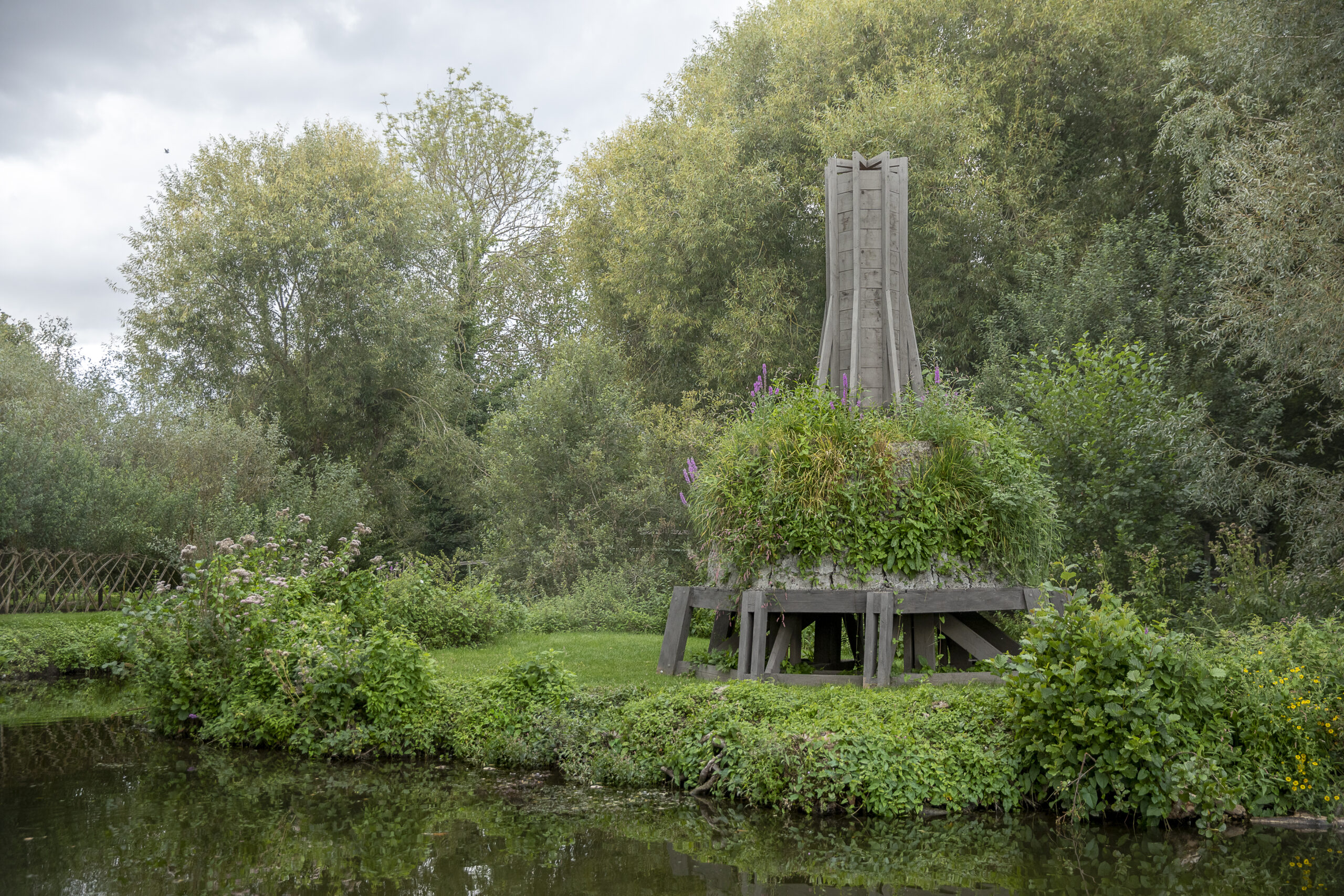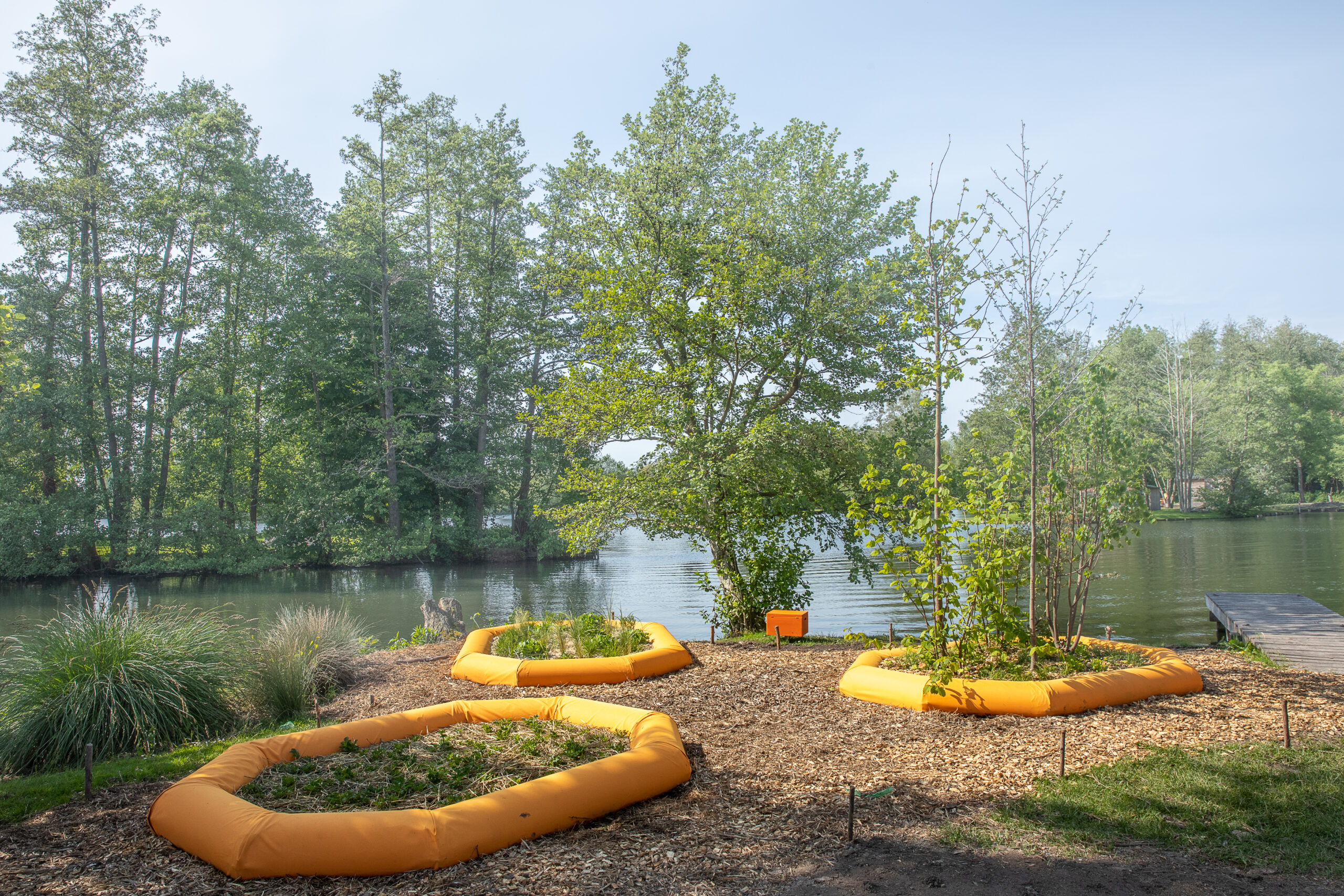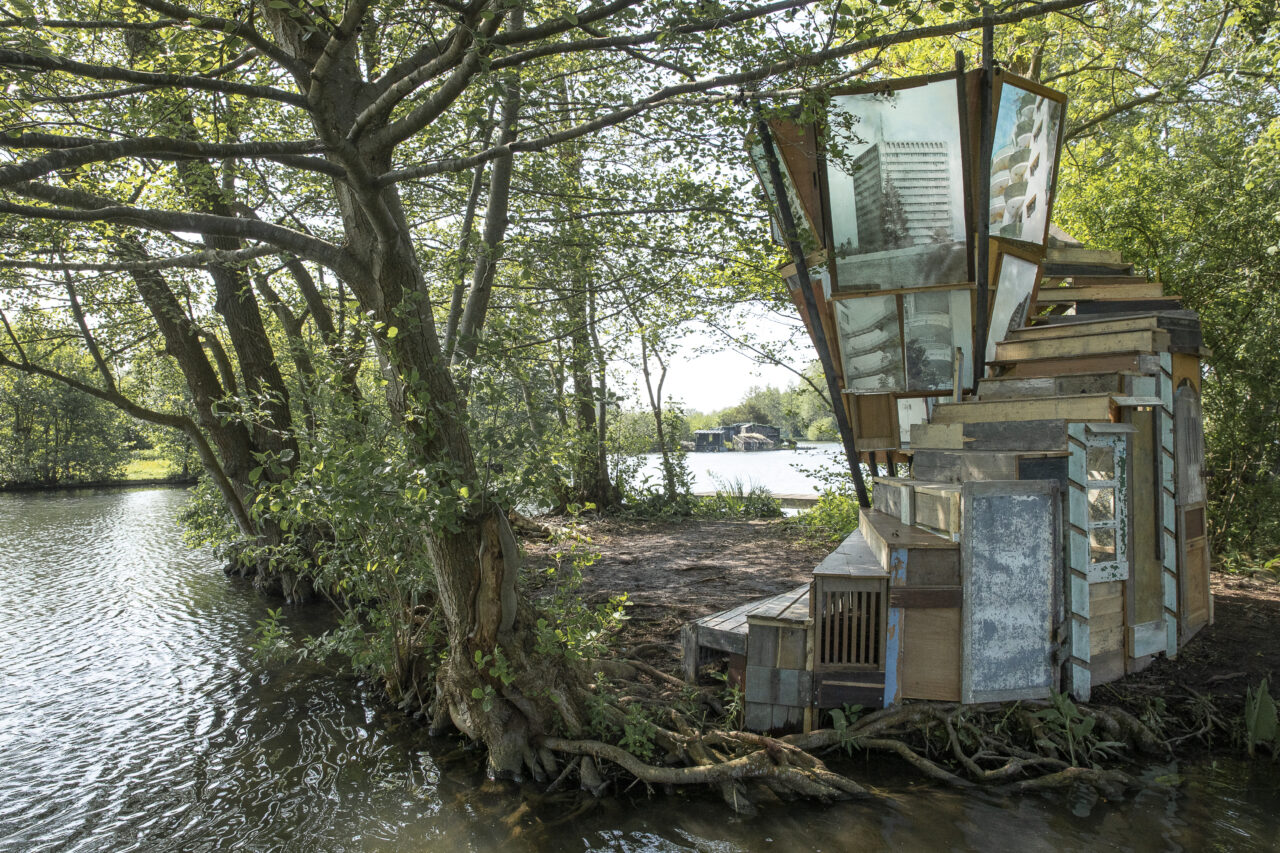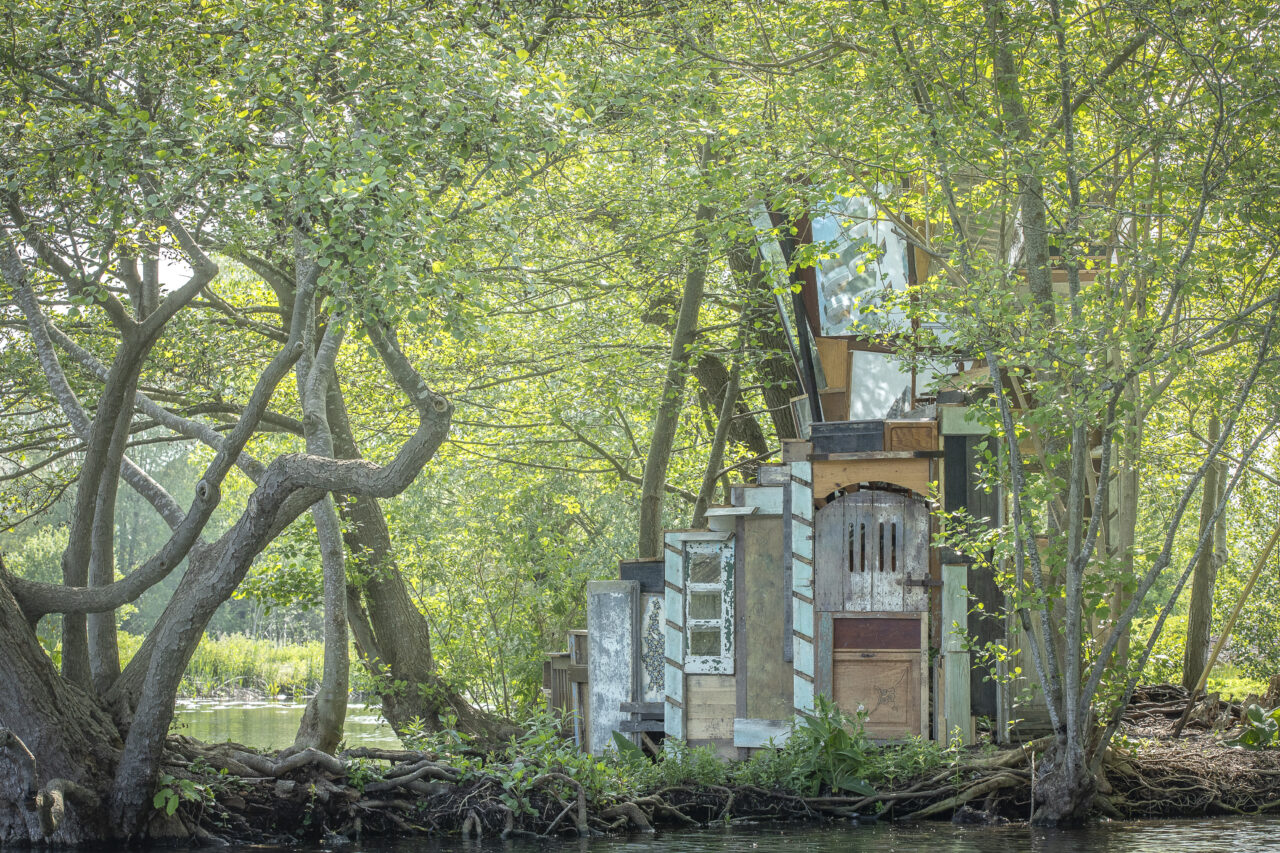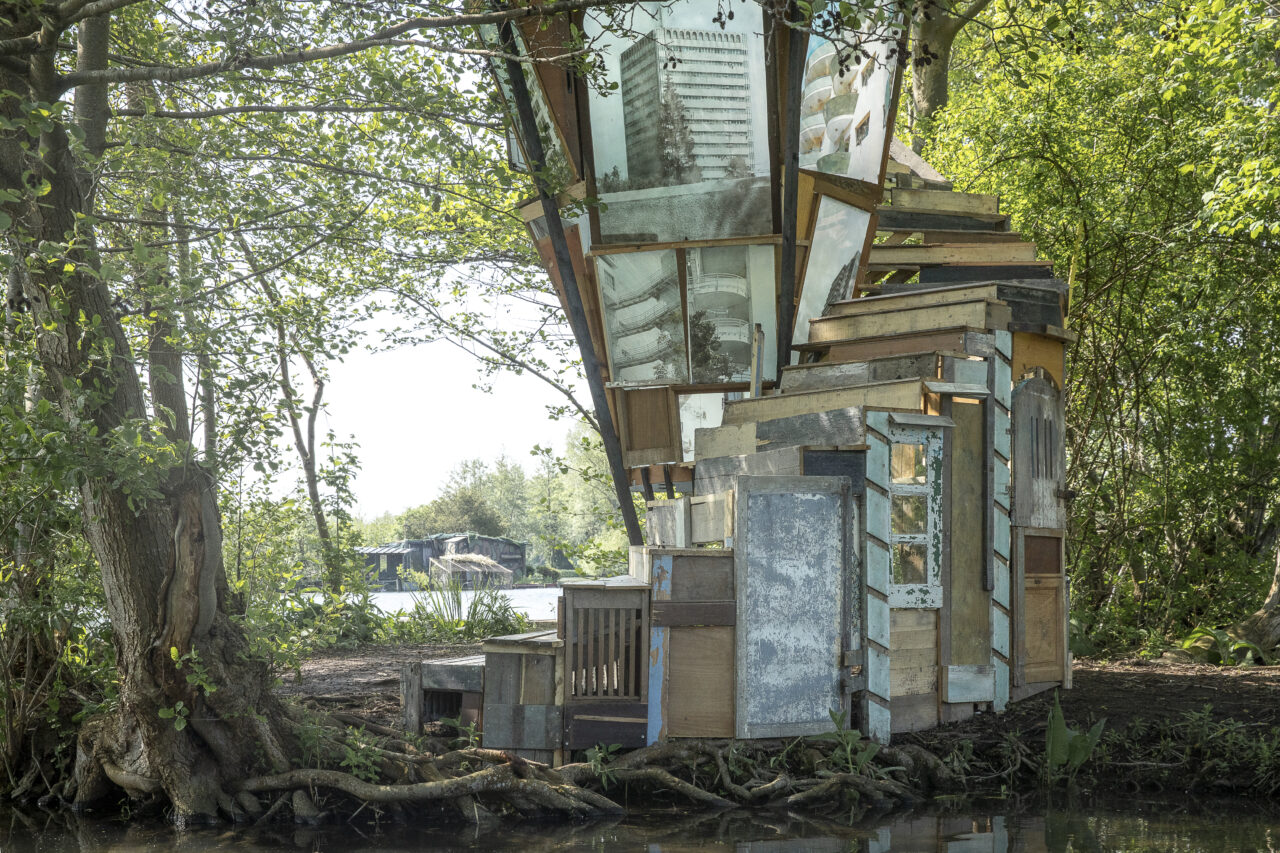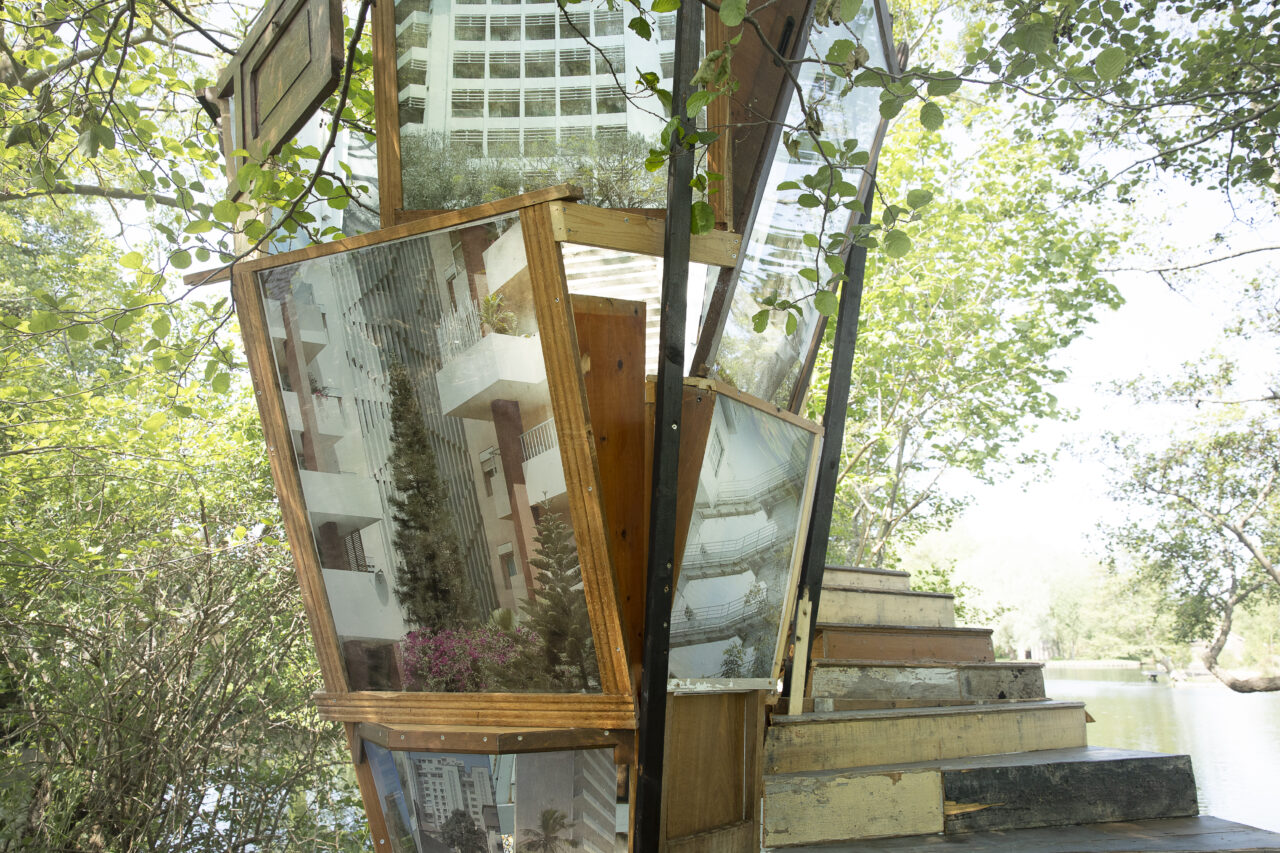We say that Nature abhors a vacuum, yet everything that makes up the world around us is made of this changing mixture that animates us, this mixture of memories and forgetfulness. Every morning, we forget the shape of our face from the day before, so that we can always recognize ourselves, despite the passing of time. This vacuum is everywhere, in every decision we did not make, in every story, every face we have forgotten. And if every gesture erases or replaces the previous one, there is always a trace, an empty mark of that absence. These are the vestiges of the past that transpire in the streets of our cities, with the passing of seasons, in the reflection of the houses and the facades of the buildings.
Space is like a garment that takes its shape when we put it on, it embodies with us. To imagine and produce a sculpture in the context of the Hortillonnages is first to address the context – the responsibility to occupy, activate a space. We must then search for the traces that inhabit the city and the gardens – to question what is missing – what is abandoned, forgotten: collect objects without use, broken furniture, lost in the back of a garage or attic, antique fragments of architecture, door, window, beam… but also lost memories – past events disappeared without leaving a trace.
In 1906, in Parc de la Hotoie, the colonial exhibition presented a “Senegalese village” – a real human zoo that today leaves no trace. From one garden to another, it’s time for sculpture: to assemble these lost fragments of the past to produce space – a new local memory place, the possibility of mixing realities: the context of Hortillonnages – the colonial history of the city of Amiens, contemporary Senegal and their common trajectory.
Stepwell – here above, here below, made up of three intertwining staircases around an impluvium made of photographs of Dakar, evokes the reflections of a city in the images of another city. Between an object and a space, the staircase becomes a place in itself – one goes up it, shelters below it, it guides the gaze. On the small island of the Hortillonnages, it makes room, ritual, or passage…
The artist
Téo Bétin


